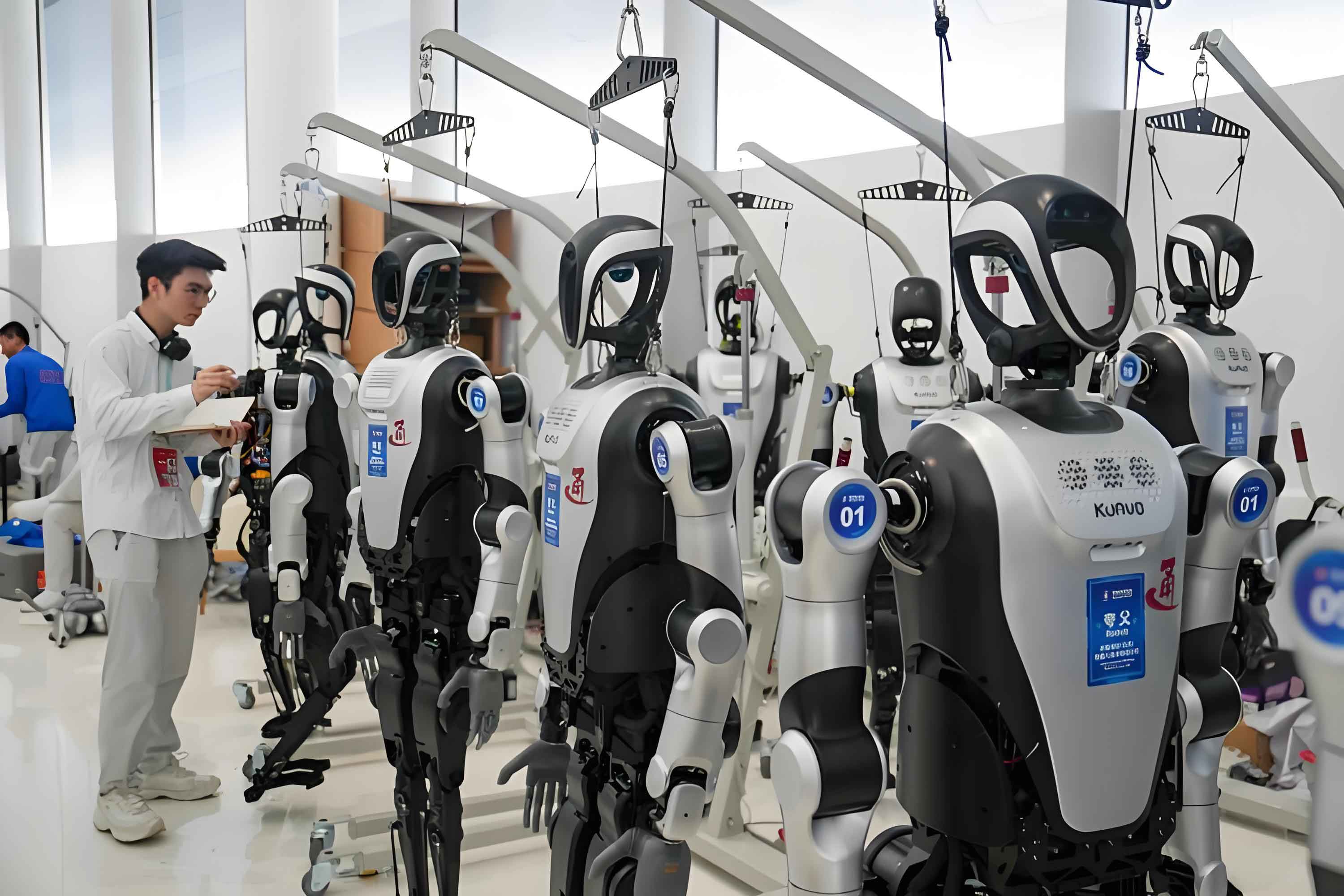China’s industrial landscape now dominates global robotics, claiming over 50% of worldwide installations—a staggering 11-year reign as the largest industrial robotics market. Yet the pressing question echoes: When will humanoid robots transcend factories and enter homes? Experts dissect breakthroughs, ethical labyrinths, and the elusive path to mass adoption.

Technological Surge: From Labs to Factories
Recent leaps in dexterity and cognition propel humanoid robots toward unprecedented functionality. Multidimensional tactile-sensitive “hands” fused with AI visual systems enable delicate object manipulation. Meanwhile, generative AI architectures empower complex task planning and fluid human-robot interaction. These innovations thrive in controlled environments: assembly lines deploy squads of humanoid robots for synchronized, multi-task operations, while logistics hubs utilize them for hazardous material handling. China’s policy-engineered ecosystem—blending manufacturing scale with R&D incentives—fuels this acceleration.
However, real-world adaptability remains a hurdle. Current models excel in scripted demonstrations but falter in unpredictable settings. “Motion control has evolved dramatically, yet transitioning from staged performances to chaotic, multi-domain efficiency demands radical innovation,” notes Liu Huaping, a leading roboticist.
The Household Divide: Promise vs. Reality
Despite cinematic visions of domestic companions, three barriers stall the home invasion of humanoid robots:
- Ethical Quagmires
Personalization requires invasive data access: facial recognition, habit tracking, and emotional analysis. Zhang Linghan underscores the dilemma: “A humanoid robot serving your family must know intimate details. Without ironclad privacy frameworks, public trust will shatter.” Regulatory vacuums persist globally, with few guidelines governing AI’s physical manifestations. - Technical Everest
Merging generative AI with mechanical bodies creates unparalleled complexity. While chatbots hallucinate text, a malfunctioning humanoid robot could physically harm users. Battery endurance, real-time environmental processing, and failure-safe designs remain unresolved. “The engineering demands dwarf those of pure software AI,” Zhang adds. - Cost Chasm
Luxury pricing confines early models to labs and corporations. Mass adoption hinges on slashing production expenses—a feat requiring material science breakthroughs and scaled manufacturing. Industry analysts project sub-$20,000 units by 2030, yet affordability for “mainstream families” demands further cuts.
Industrial Springboard, Domestic Delay
Factories emerge as critical testing grounds. Smart plants now deploy humanoid robots for round-the-clock production, adaptive retooling, and high-risk maintenance. Li Zhenjing envisions these machines evolving into “new labor collaborators,” augmenting human workers in construction, mining, and emergency response.
Household integration, however, lags. Early successes like robotic vacuums prove limited functionality suffices for niche adoption. For complex humanoid robots, experts forecast incremental entry: first as premium elder-care aides or educational tutors, later as multipurpose helpers. “They’ll likely debut as specialized tools, not synthetic family members,” Liu predicts.
The Roadmap: Four Pillars of Progress
Future advancement relies on converging critical technologies:
- Adaptive Motion Control: Next-gen actuators and reinforcement learning must enable humanoid robots to navigate cluttered homes, handle fragile objects, and recover from falls autonomously.
- Energy Density: Compact, long-lasting batteries or wireless power solutions are non-negotiable for all-day operation.
- Embodied AI Integration: Moving beyond “chatbot brains,” robots need spatial reasoning and causal understanding—blending large language models with physical intuition.
- Affordable Sensing: Cost-effective lidar, tactile sensors, and thermal imaging will democratize perception capabilities.
Conclusion: Patience Amid Promise
The humanoid robot revolution marches inexorably forward, yet its timeline stretches beyond hype cycles. Industrial domains will continue refining robustness and cost-efficiency, while ethical guardrails slowly materialize. When prices plummet and safety certifies, these machines may finally cross the domestic threshold—not as sci-fi avatars, but as pragmatic aids. Until then, laboratories buzz with breakthroughs, factories hum with automated synergy, and the dream of a humanoid robot in every home endures, patiently awaiting its moment.
